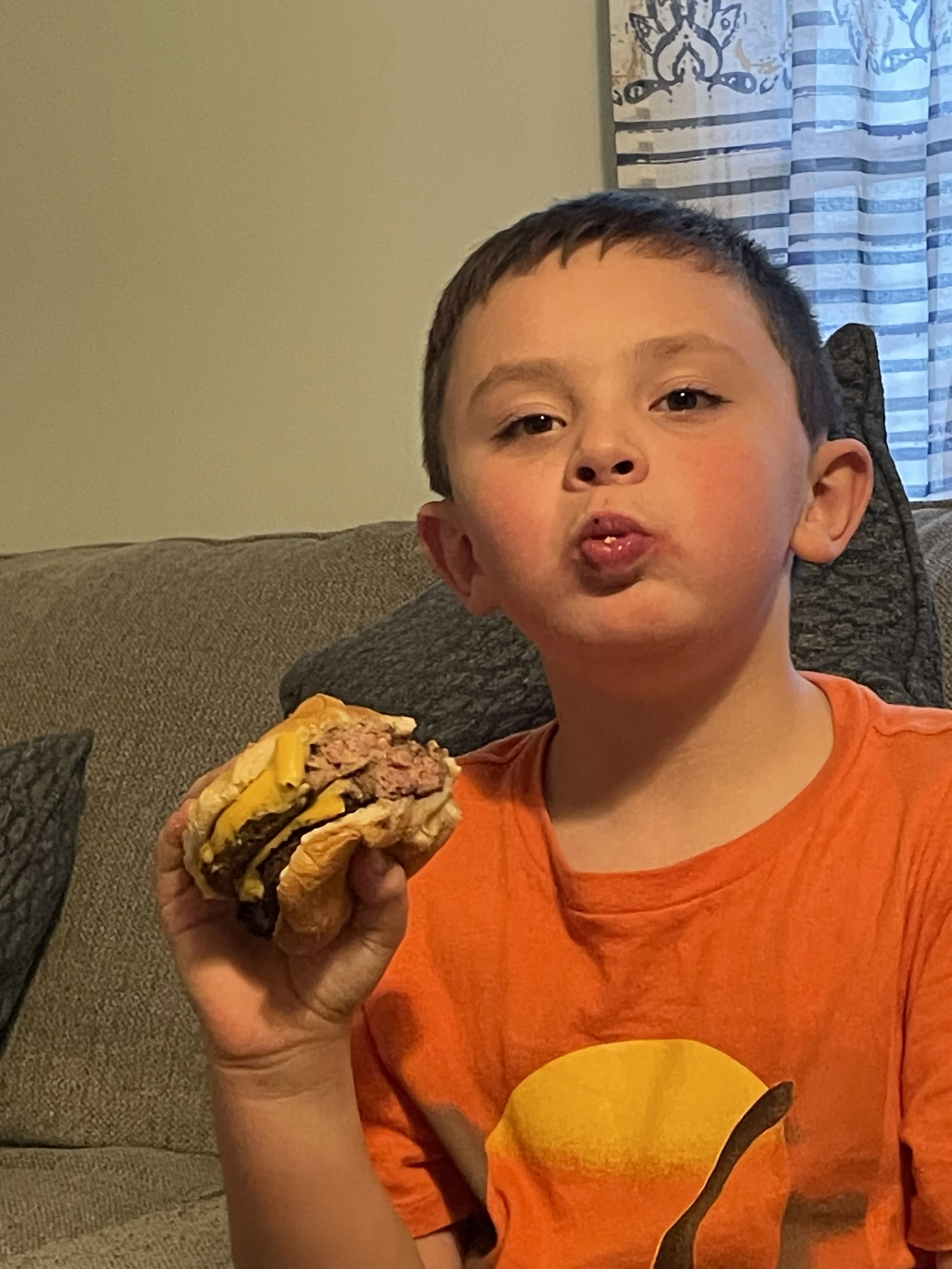Nutrition: Let’s Keep It Simple and Real
At first glance, he’s crushing a cheeseburger—but really, we’re building habits around real, whole food fuel.
By Justin “The Jaguar” Carrillo — fighter, coach, and someone who's been in your shoes.
Hi, hey, hello! Glad you made it here. Growing up I was motivated to change everything I knew about myself. It wasn’t easy, but it was much easier than living a life where I wasn’t happy with my body. Learning the basics about food and nutrition transformed my life — and I want to share as much as I can, SIMPLY.
1. Start small — a little better adds up.
People get burnt out trying to do everything at once, obviously not you, you’re reading my post & taking the right steps. I know the power of the little things, the choices that led you into becoming who you are today, good and bad. At any moment, you can turn it around. At any moment, you can make a choice that supports an intention or one that supports an old habit. One of my favorite resources over the years has been Precision Nutrition. Precision Nutrition encourages people to think of foods on a spectrum from “eat more,” → “eat some,” → “eat less” rather than labeling them good or bad. That pizza fantasy you have? It’s not the end of the world. You aren’t gonna die from a slice. Try swapping in a lean protein, some whole grains or complex carbs, and veggies as your go‑to — it’s not perfection, but directionally it’s better. Work on making small changes & consistently making better choices.
2. Build the basics of balanced meals
I’m not saying you’re limited to these, but this is just a simple guide. I encourage creativity, especially if it works for you. Every meal should include:
A protein: chicken, beef, fish, eggs, legumes
A smart/complex carb: sweet potato, quinoa, brown rice, whole grains
A handful of vegetables for fiber and micronutrients
A bit of healthy fat: avocado, nuts, olive oil, seeds & even a steak or two
Simply protein increases satiety, carbs fuel workouts, fats support hormones — and whole-food meals keep hunger, energy, and mood balanced.
3. Progress, not perfection
If your timeline feels overwhelming, start with just one goal: track what you eat for 2–3 days. That’s the first step toward sustainable change. Just like I mentioned above, consistently making better choices, ones that align with your intentions, will put you in a better place, directionally. If you're ready to dial it in — even better — we can take it from there.
4. Timing matters, but simplicity rules
The time before and after a workout, when you eat, matters too! I’ll go into this more in another post, but we’ll keep it simple here. Eat 1-2 hours before & after a workout. Post-workout fuel matters a lot, especially to kick off the recovery phase — think protein + carbs soon after exercising. But if you’re doing 20–30 minute workouts, don’t overcomplicate it (Precision Nutrition Infographic). Hydrate, prioritize whole foods, and keep moving forward.
A little from the Jag:
We’ll chat about all this one-on-one someday soon, but here’s a quick tip:
Use hand portion guides — 1–2 palm-size servings of protein, 1–2 fists of veggies, 1–2 cupped handfuls of carbs, 3–4 thumbs of healthy fat from Precision Nutrition’s model Precision Nutrition — and adjust from there as you learn what your body needs.
My best coaching isn’t about diets — it's about small changes that stack up: choosing whole foods, balancing meals, staying consistent, and making progress over time.
Let’s do this together. Whether you’re a fighter, a weekend warrior, or someone who wants to feel better and live stronger, nutrition is the foundation. I’ve helped countless people crush their goals by keeping them realistic, enjoyable, and science-based.
Let’s write your story next — nutrition and all. 💥
— Justin (The Jag) 🐆

